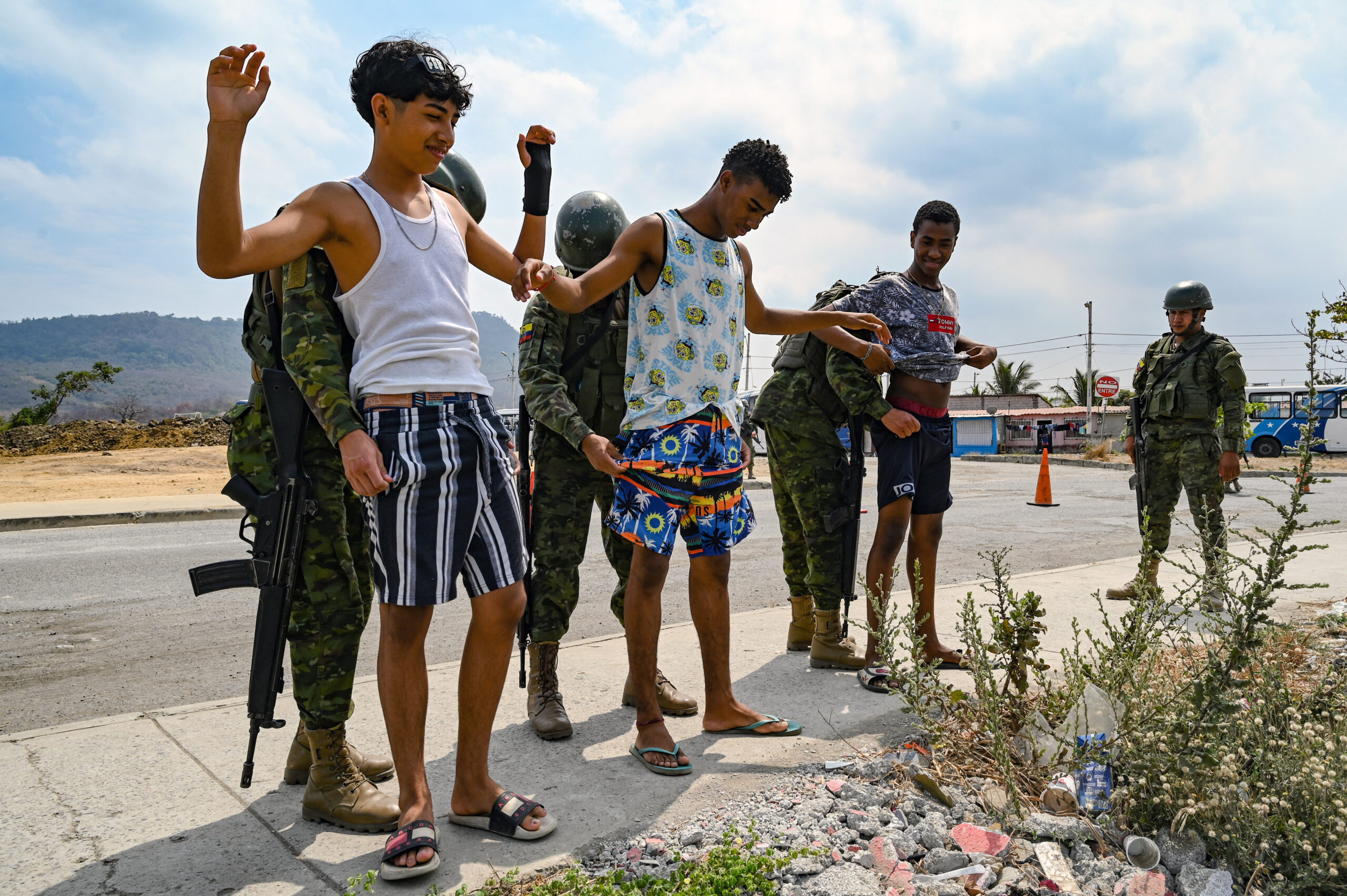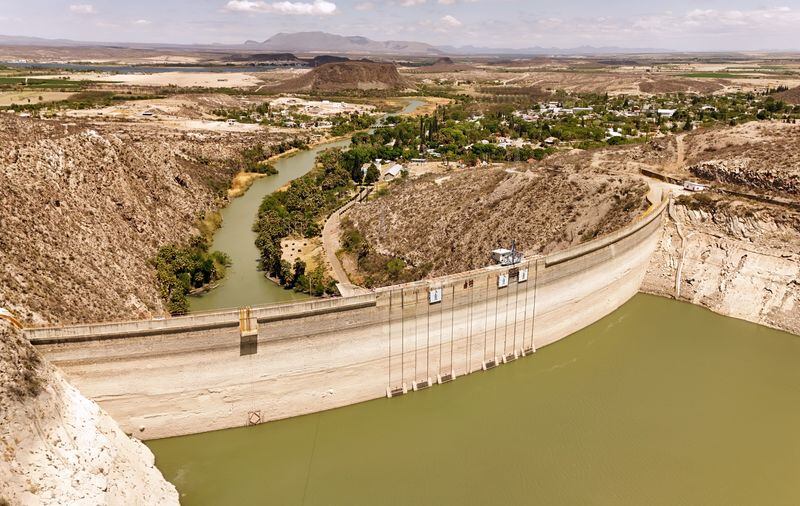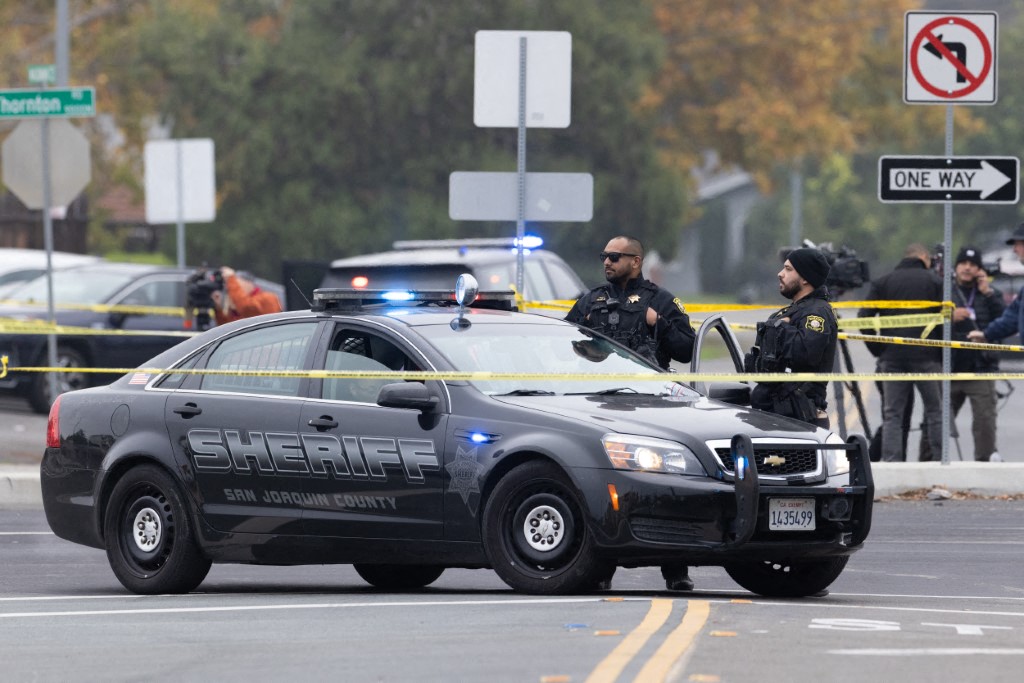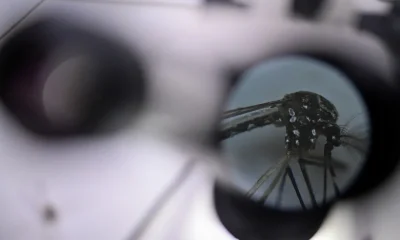International
Guayakill: Ecuadoran port city torn apart by gangs

| By AFP | Héctor Velasco and Karla Pesantes |
Entire neighborhoods run by gangs, prison bloodbaths and police overwhelmed by criminal firepower: Drug trafficking has transformed the Ecuadoran city of Guayaquil into a den of violence.
The port city of 2.8 million people, which on Saturday hosts the final of the Copa Libertadores competition, has witnessed scenes of incredible barbarity in recent years.
Hundreds of inmates have been killed — many beheaded or incinerated — in numerous prison battles, and civilians have increasingly gotten caught up in the gang war rocking the city rebaptized “Guayakill” by inhabitants.
So far this year, the commercial heart of Ecuador has seen 1 200 murders — 60 percent more than in 2021 according to official data.
Since last year, almost 400 inmates have died in several cities, most of them in Guayaquil, which has also been hit by a spate of car bombs and shocking scenes of bodies dangling from bridges.
And despite the government declaring states of emergency to allow for troop deployment and boosting police numbers in Guayaquil by over 1 000 to nearly 10 000, some fear it is a losing battle.
“We used to confront small arms… revolvers. But now on the streets we face American (automatic) rifles, grenades, explosive devices,” police forensics official Luis Alfonso Merino told AFP.
“The violence has grown enormously.”
Rifles, grenades
Once a relatively peaceful neighbor of major cocaine producers Colombia and Peru, Ecuador was long merely part of the drug transit route.
But recently, traffickers with suspected links to Mexican cartels such as Sinaloa, the Gulf Clan and Los Zetas have been expanding their domestic presence — fighting over the fast-growing local market and access to the port of Guayaquil for exports to Europe and the United States.
The city’s prisons, where gangs also battle it out for supremacy, are emblematic of the fast-declining security situation.
In one of the deadliest riots in Latin American history, 122 people were slaughtered at the infamous Guayas 1 penitentiary in September last year in an hours-long rampage by inmates wielding guns, machetes and explosives.
“The State does not govern the prisons,” Billy Navarrete of the CDH human rights NGO told AFP.
Instead, they are under the control of “criminal organizations with the complicity of law enforcement agents who allow, tolerate and enrich themselves with arms trafficking,” he said.
The government has announced it was stepping up enforcement. In 2021, it reported a record haul of 210 tons of drugs.
So far this year, the figure stands at 160 tons.
In a 2019 report, Ecuadoran intelligence said there were at least 26 criminal gangs fighting for control of the lucrative drug market, but officials have since said the number is likely higher.
And according to operations chief Major Robinson Sanchez in Guayaquil, the gangs are “better armed than the police.”
Wolves vs Eagles
At the entrance to Socio Vivienda II, an impoverished housing development and one of the most dangerous places in Guayaquil, police and soldiers stand guard.
Two dozen others in black uniforms, bulletproof vests and balaclavas patrol the narrow streets on motorcycles.
Some 24 000 people live in Socio Vivienda’s three sectors in the crossfire of the gang war that has resulted in several public shootouts since 2019 and forced school closures in recent weeks.
The gangs go by names such as Lobos (Wolves) and Tiguerones. The Aguilas (Eagles) are based higher up on the hill.
When the groups first started going head to head, the community itself erected metal gates at the ends of streets to prevent gang members from moving freely about.
But police removed these for ease of access, and now “the bullets zoom from one end to the other,” said a community leader, 45, who spoke on condition of anonymity in an atmosphere of fear.
‘Zombies’ and sentinels
Patrolling officers stop at a house in Socio Vivienda and enter by force.
They find no drugs, only three youngsters with “Tigueron” tattooed onto their arms. It is not enough to detain them.
The gangs use children as young as 10 as sentinels or informants, residents and police say.
As they “rise” in the organization, they earn the right to get tattooed — but not without having committed a crime.
On the streets, it is common to see doped-up consumers of “H” — a heroin residue sold for 25 cents per gram. They are known locally as “zombies.”
The community leader told AFP that luxury vehicles moved in and out freely, transporting drugs right under the noses of police.
And as fearful families leave the neighborhood, gang members immediately “move in” to their homes, he added.
So far this year in Socio Vivienda II alone, records show 252 killings, up from 66 in 2021.
On the weekend preceding Saturday’s Libertadores clash between Brazilian teams Flamengo and Athletico Paranaense, 21 murders were reported in Guayaquil.
Some 50 000 foreign fans are expected to turn out for Saturday’s final.
International
Police investigate deaths of Rob Reiner and wife as apparent homicide

The Los Angeles Police Department (LAPD) is investigating the deaths of Hollywood actor and filmmaker Rob Reinerand his wife as an “apparent homicide,” amid a wave of tributes to the director of classics such as When Harry Met Sally.
According to U.S. media reports on Sunday, Rob Reiner and Michele Singer Reiner were found dead at their Los Angeles mansion with what appeared to be stab wounds.
Several political figures shared messages of condolence following the reported deaths of the director of A Few Good Menand his wife.
While the LAPD did not officially confirm the identities of the victims, it stated that homicide detectives were dispatched to the Reiner residence.
“At this time, no additional details are available and the investigation into an apparent homicide is ongoing,” the Los Angeles Police Department said in a statement posted on social media.
LAPD Deputy Chief Alan Hamilton told reporters that no arrests have been made and that no individuals are currently being questioned as suspects.
“I’m not going to confirm whether anyone is being questioned at this moment or not. We are going to try to speak with as many family members as we can,” Hamilton said.
CNN reported that a family spokesperson confirmed the deaths of Reiner and his wife.
California Governor Gavin Newsom, former U.S. President Barack Obama, and former Vice President Kamala Harrisissued statements expressing their condolences.
International
U.S. and Mexico Reach Deal to Address Water Deficit Under 1944 Treaty

The United States and Mexico have reached an agreement to comply with current water obligations affecting U.S. farmers and ranchers and for Mexico to cover its water deficit to Texas under the 1944 Water Treaty, the U.S. Department of Agriculture said in a statement.
The department уточified that the agreement applies to both the current cycle and the water deficit from the previous cycle.
On Monday, U.S. President Donald Trump accused Mexico of failing to comply with the water-sharing treaty between the two countries, which requires the United States to deliver 1.85 billion cubic meters of water from the Colorado River, while Mexico must supply 432 million cubic meters from the Rio Grande.
Mexico is behind on its commitments. According to Washington, the country has accumulated a deficit of more than one billion cubic meters of water over the past five years.
“This violation is severely harming our beautiful crops and our livestock in Texas,” Trump wrote on Monday.
The Department of Agriculture said on Friday that Mexico had agreed to supply 250 million cubic meters of water starting next week and to work toward closing the shortfall.
Agriculture Secretary Brooke Rollins, quoted in the statement, said Mexico delivered more water in a single year than it had over the previous four years combined.
Trump has said that if Mexico continues to fall short of its obligations, the United States reserves the right to impose 5% tariffs on imported Mexican products.
Mexico’s Deputy Foreign Minister for North America, Roberto Velasco, said that a severe drought in 2022 and 2023prevented the country from meeting its commitments.
International
Several people shot in attack on Brown University campus

Several people were shot on Saturday in an attack on the campus of Brown University, in the northeastern United States, local police reported.
“Shelter in place and avoid the area until further notice,” the Providence Police Department urged in a post on X. Brown University is located in Providence, the capital of the state of Rhode Island.
U.S. President Donald Trump said on his social media platform Truth Social that he had been briefed on the situation and that the FBI was on the scene.
At 5:52 p.m. local time (11:52 p.m. GMT), Brown University said the situation was still “ongoing” and instructed students to remain sheltered until further notice.
After initially stating that the suspect had been taken into custody, Trump later posted a second message clarifying that local police had walked back that information. “The suspect has NOT been apprehended,” the U.S. president said.
-

 Central America4 days ago
Central America4 days agoHonduras election crisis deepens as CNE president denounces intimidation attempts
-

 International4 days ago
International4 days agoCuba battles out-of-control dengue and chikungunya epidemic as death toll rises to 44
-

 International4 days ago
International4 days agoColombia says it would not reject Maduro asylum request as regional tensions escalate
-

 International1 day ago
International1 day agoPolice investigate deaths of Rob Reiner and wife as apparent homicide
-

 Central America2 days ago
Central America2 days agoPanama seizes over three tons of drugs hidden in Caribbean port container
-

 International3 days ago
International3 days agoSeveral people shot in attack on Brown University campus
-

 Central America1 day ago
Central America1 day agoOAS urges swift recount in Honduras as election results remain uncertain
-

 International4 days ago
International4 days agoEcuador on track for record violence as homicides hit highest level in Latin America again
-

 International3 days ago
International3 days agoU.S. and Mexico Reach Deal to Address Water Deficit Under 1944 Treaty


























